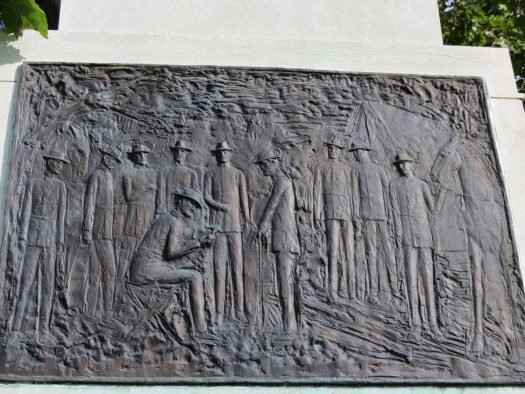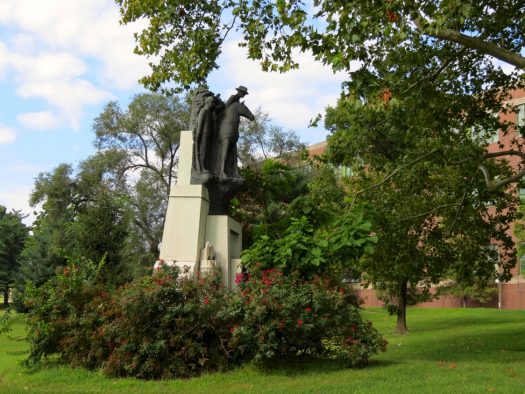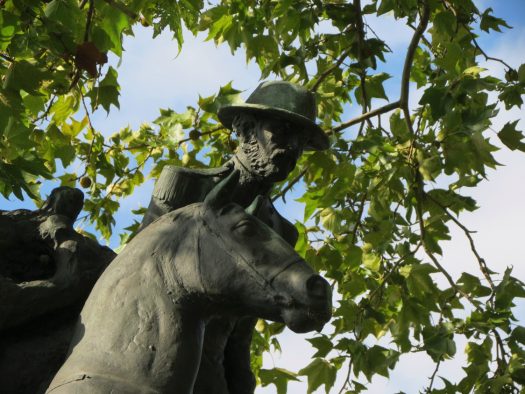From ‘The contested memories of general Natahniel Lyon in St. Louis’, by Nick Sacco
” Union Civil War veterans in the city who were active in the Grand Army of the Republic began calling for a monument honoring General Lyon in 1927. Over the next two years they raised 15,000 dollars and hired the Swiss-born sculptor Erhardt Siebert to design the monument, which would be located at the original Camp Jackson site at Grand and Pine streets. Siebert, however, faced criticism even before the official unveiling on December 22, 1929. Numerous artists who saw the monument criticized several aspects of the overall design. Lyon’s horse looked small, weak, and sick; Lyon himself appeared to be falling off the monument, and perhaps worst of all, Lyon’s first name was incorrectly spelled as “Nathanial.” Edmund H. Wuerpel, Director of Fine Arts at Washington University—St. Louis, declared that “it would be a kindness to the city and its inhabitants if this latest creation should be withdrawn permanently from the public gaze.” Mayor Victor Miller asserted defensively that nobody was forcing residents to look at the monument. The criticism was so strong, however, that Miller agreed to establish a city art commission to review future proposals for public monuments
For the next twenty-five years, St. Louis residents debated the merits of keeping what was by all accounts an ugly monument. The St. Louis Post-Dispatch pleaded for a wealthy philanthropist to purchase and remove the monument as an act of kindness to the city. They also sarcastically argued that the space would be better suited to function as a parking lot. When President Franklin Roosevelt suggested in 1942 that some historical monuments should be turned into scrap metal to support the U.S. military effort in World War II, the paper eagerly volunteered the Lyon statue for destruction. The monument remained untouched, but Parks Commissioner Palmer Baumes offered a lukewarm defense of the monument and said he would have allowed for its removal if city leaders had wanted it.”














